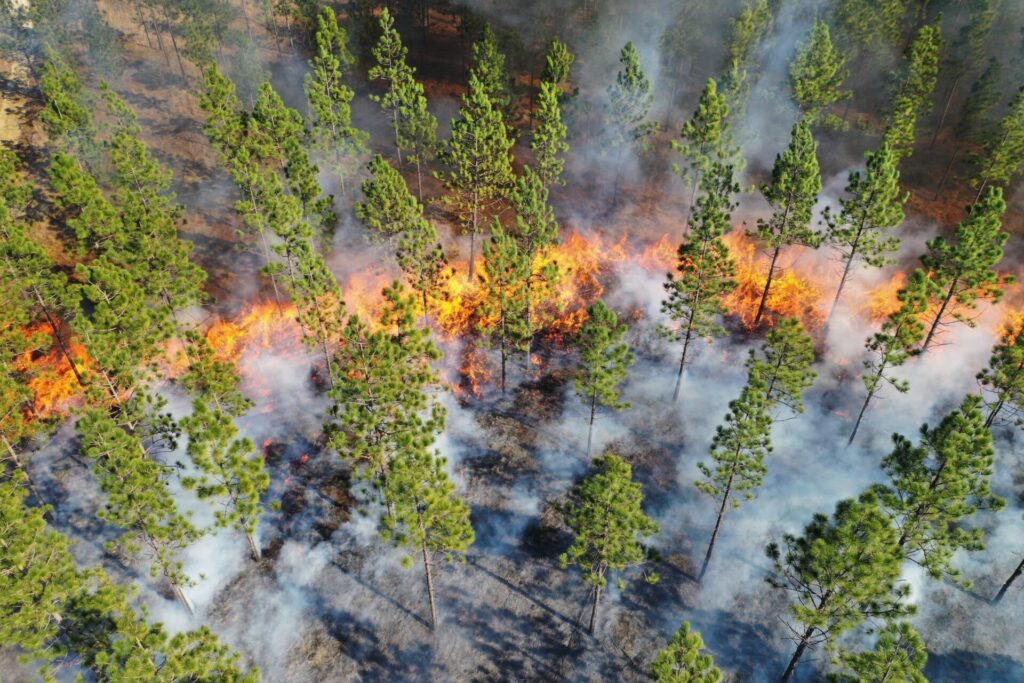By Shelagh Clancy
Longleaf Pine forest once covered our Southeast coast and coastal plain from Virginia to Texas—some 90 million acres of it. Home to hundreds of types of flora and fauna, including 29 threatened or endangered species, Longleaf Pine forests are an incredibly diverse ecosystem.
Timbering began the destruction of this forest as the tall, straight trees were cut for shipbuilding and other uses. More trees were felled for tar and turpentine as North Carolina became the Tar Heel State. Development and fire suppression followed, and today, only about four million acres of Longleaf Pine forest remain—about four percent of the original range.
But interest in this ecosystem is growing and so are efforts to preserve and grow the important habitat. Leading the way is The Nature Conservancy (TNC), which preserves 17,000 acres of Longleaf Pine forest and pocosin in the Green Swamp in Brunswick County.
Our Fire Forest
“It’s our trophy preserve,” says Conservation Coordinator Michelle Ly. “I compare it to the Amazon rain forest. Longleaf Pine forest needs fire. And both forests are so diverse. Studies have found 42 different plant species in a 1-meter square.”
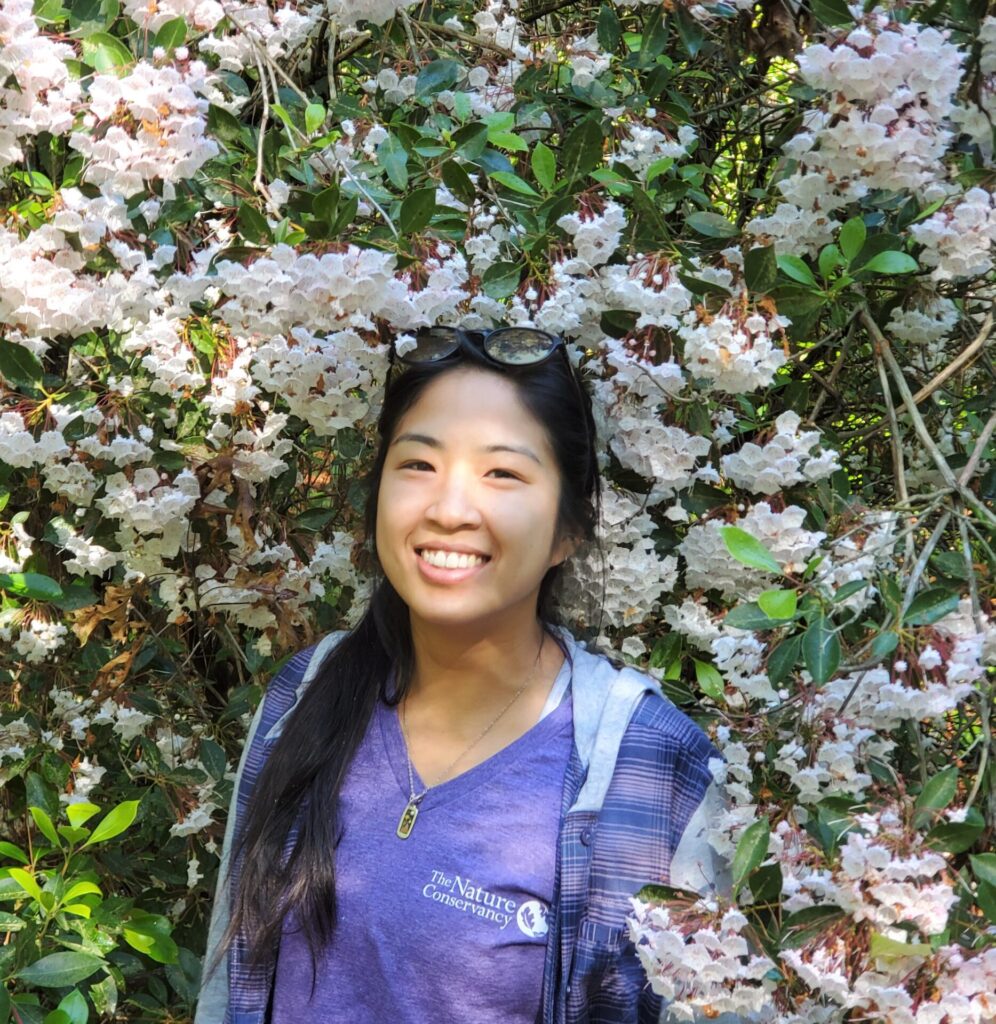
The Green Swamp is a typical Longleaf Pine forest, with a high canopy and open forest floor, birds singing, and many unusual plants.
“It’s open like that because of fire,” Ly says. “Longleaf is a fire-adapted forest and always has been. Historically, fire has been traveling through the landscape. Indigenous people used lightning strikes and fire for their benefit for grazing and agriculture.”
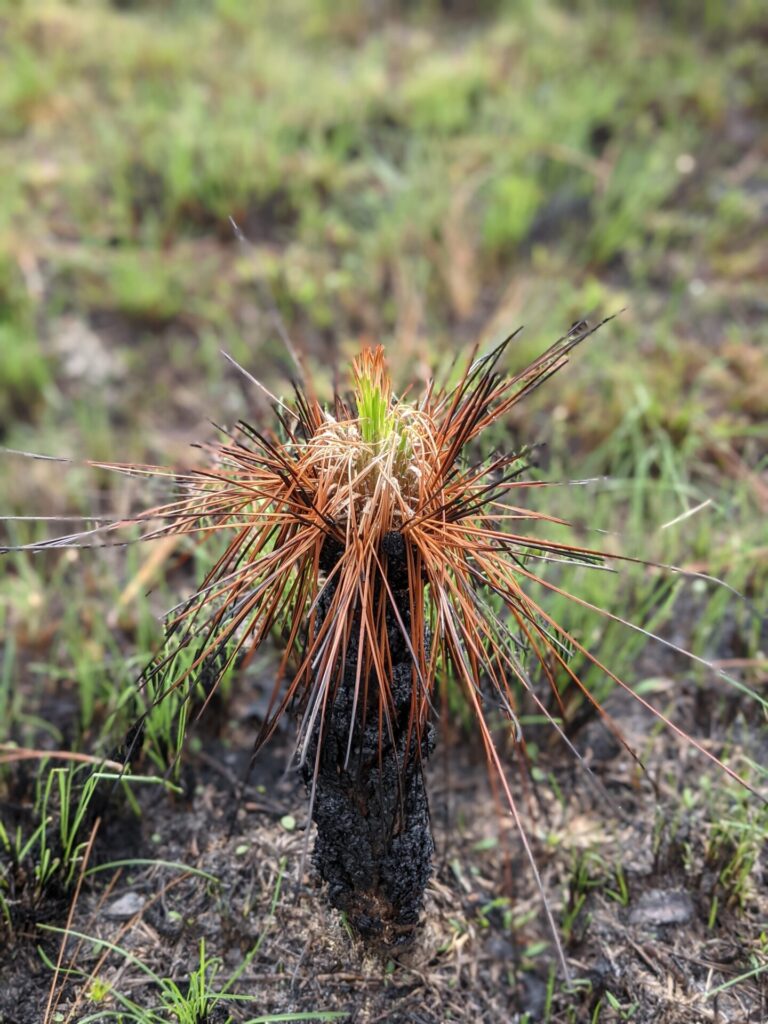
TNC regularly performs controlled burns to reduce shrubby vegetation on the forest floor and to limit other pine species and hardwoods that would out-compete the Longleaf Pines. Controlled burns mimic the wildfires that once routinely burned sections of the forest. And burns allow plants to flourish that naturally grow in an open, sunny pine savannah.
Fire-Dependent Plants
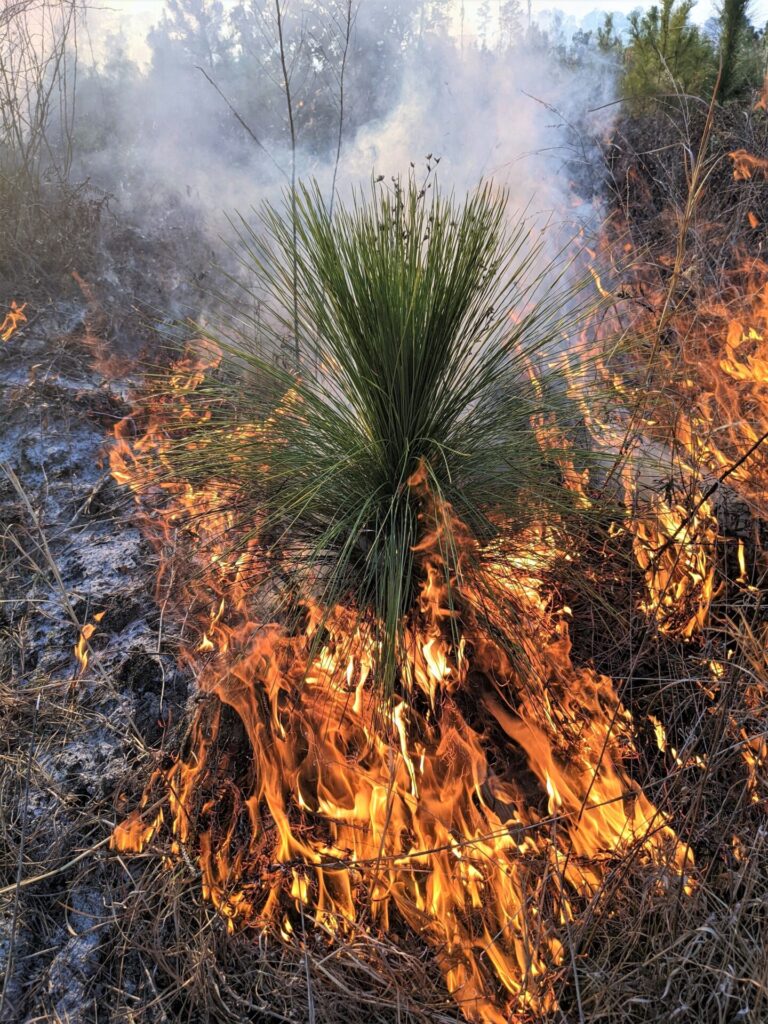
Longleaf Pine seeds need bare ground without leaf litter to germinate, and they need sunlight to grow. Seedlings resemble grass more than trees, and in this “grass stage” the terminal bud is resistant to fire. Meanwhile a tap root grows up to 12 feet underground for 5 to 12 years. Then the trunk shoots up so the needles are held above most fires. A Longleaf Pine may live 300 years.
Grasses, sedges, orchids, and carnivorous plants also depend on fire to flourish. Their roots survive the hottest fires, and they emerge from a burn into an open, sunny habitat. Low-growing Wiregrass preserves the open feeling of the forest and blooms only the year after a fire.
Best Burns
TNC manages 40,000 acres across southeastern North Carolina, and controlled burns are a frequent—and delicate—operation. Burning near a road or other human environment requires even more care.
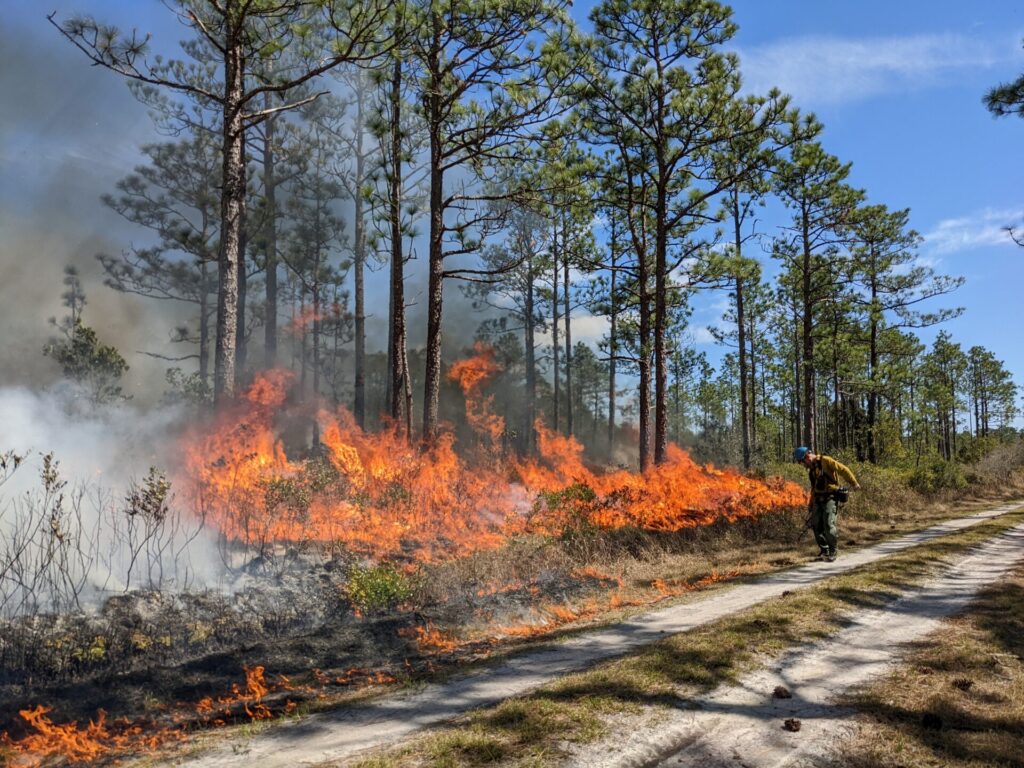
“People who work our burns are trained and certified in equipment,” Ly says. “A Burn Boss is in charge of the burn, and we write a weather-specific burn plan.” Conditions such as wind direction, humidity, vent rate, and other calculations must be perfect to make the burn a go.
“Basically all the stars have to align to make it happen,” Ly says. The burn team gathers for a briefing and assembles equipment and radios. They choose a small area and start a test burn. As it develops, the Burn Boss decides whether they’ll need to turn back.
TNC hosts an annual Fire in the Pines festival at Halyburton Park in Wilmington where the public can watch a controlled burn up close (but not too close). This year, mark your calendars for Oct. 8.
Special Plants in the Green Swamp
A walk through the park-like Green Swamp is enchanting in any season. Keep an eye out for Venus Flytrap, pitcherplants, and tiny sundews, which are among the 14 types of insect-eating plants that flourish in the poor soils there.
“Lysimachia asperulifolia (Roughleaf Loosestrife) is an endangered species that occurs in ecotonal areas in the Green Swamp,” says Roger Shew, who teaches at UNC Wilmington and is an orchid enthusiast.
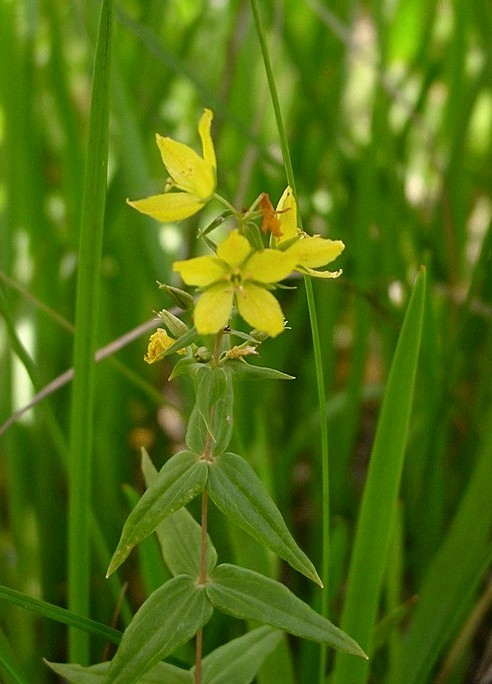
“The ecotone is a narrow area between the slightly higher savannah and the pocosin; I call it the magic zone because that is where many wildflowers, including carnivorous plants, are located. Lysimachia have interesting whorls of 3 leaves up the stem. The flower is yellow and blooms in late May through mid-June.”
Orchid Options
Some 18 species of orchids flourish in the fire forest of the Green Swamp.
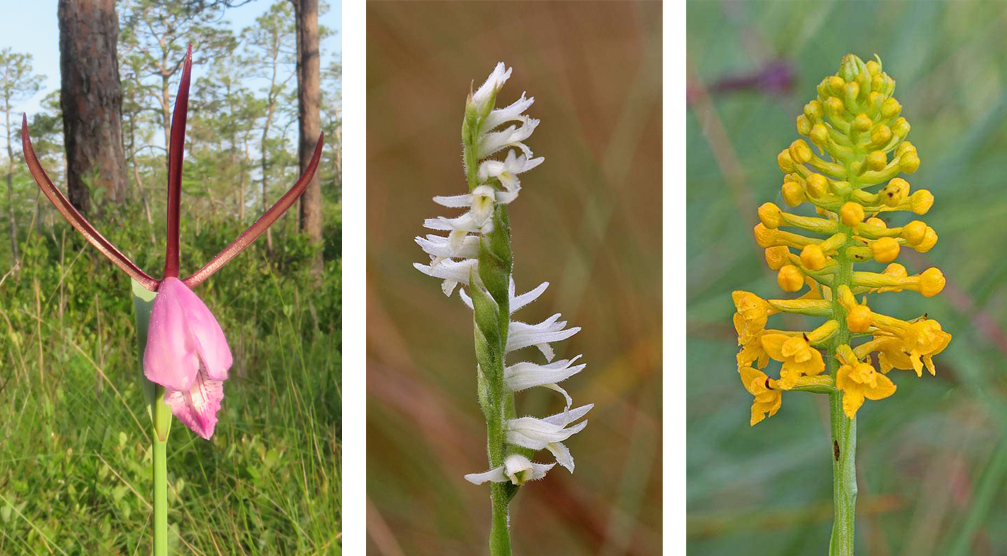
“The role fire plays with terrestrial orchids is not well understood but terrestrial orchids do benefit,” says Mark Sullivan, administrator of the Orchid Conservation Coalition. “In general orchids are edge or transition ecosystem plants.”
“There are two seasons when different orchids can be found blooming,” says Skip Pudney, another orchid admirer and photographer. “The first is now, mid-April through June. Then a second season occurs mid-August through October.
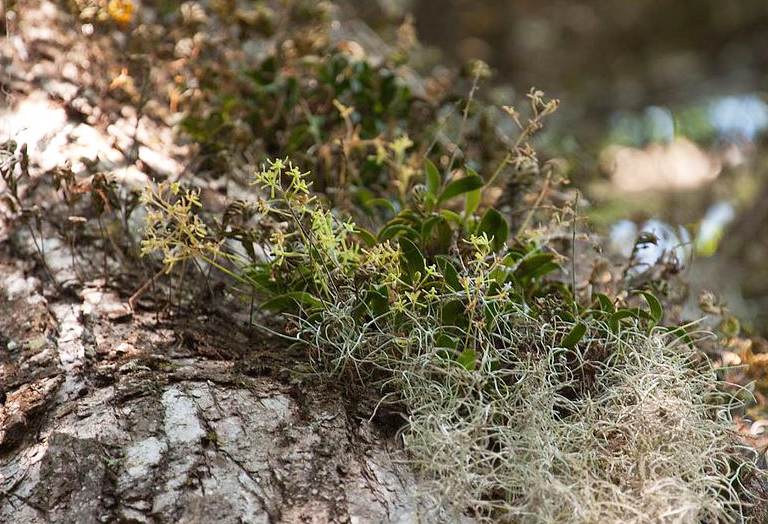
“One orchid in particular, Green-fly orchid (Epidendrum conopseum), is the only epiphytic (air-growing) orchid that occurs in North Carolina, and it only occurs at the southern tip of the state,” Pudney says. “It’s very difficult to spot because it’s often higher up in the trees and is found with Spanish-moss as well as Resurrection Fern. Binoculars help.”
Visit the Green Swamp at 673 Green Swamp Rd. NW in Supply. Take N.C. 211 off U.S. 17. The parking lot is small and rustic, so slow down as you approach.
To find out more about longleaf pine preservation and restoration efforts, learn about Nature Conservancy efforts, the Longleaf Pine Initiative, and The Longleaf Alliance.
By Shelagh Clancy
Native Plant News – Summer 2022
Editor’s Note: On October 15, NCNPS members are encouraged to ‘save the date’ to hike three longleaf pines areas in North Carolina’s western sandhills in Moore County. For more information, read the Native Plant News article by Julie Moore, “Save the Date! Join Us October 15 for the NCNPS Annual Fall Hike.”

Shelagh Clancy is a member of the Southeastern Coastal Area Chapter of the North Carolina Native Plant Society and is active with the Coastal Land Trust, which preserves land along North Carolina’s coast. She is a freelance editor and designer and owner of Sea Leaf Book Editing (sealeafbooks.com).
